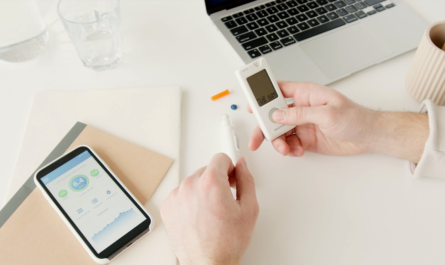
Prosthetics and orthotics are medical fields that involve the design and application of medical devices to replace or support anatomical parts of the body. Prosthetics replaces missing body parts such as arms and legs, while orthotics supports and braces weak or ineffective joints or limbs. Together, these fields aim to help patients regain mobility and independence through customized devices.
Upper Extremity Prosthetics
Upper extremity prosthetics are devices that replace an arm or hand. These may be required for individuals who have undergone an amputation of the arm or hand due to injury, illness, or congenital conditions. New prosthetic designs allow for a high degree of functionality that mimics natural movement.
Wrist and hand prosthetics can be myoelectric, containing sensors that detect electrical signals from muscles. This allows the user to open and close the hand through thought control. More advanced designs have individual finger movement. Cosmetic covers can make the prosthetic appear very lifelike.
For above-elbow amputations, prosthetics are suspended from the upper arm and may include elbow joints. Myoelectric sensors in the residual limb and shoulder allow for controlled movement. Lighter designs improve comfort and functionality.
Beyond functionality, upper limb prosthetics aim to restore confidence and independence to the user. Continued advancement of technology will further enhance user experience and quality of life.
Lower Extremity Prosthetics
Lower extremity prosthetics are used to replace a missing leg or foot. Factors like the level of amputation and activity level help determine the best prosthetic design.
For below-knee amputations, prosthetics have a knee joint and are suspended from the residual limb using a socket. Microprocessor knee joints can mimic natural gait better than mechanical knees. Carbon fiber and other strong, lightweight materials make the prosthetic durable and comfortable to wear.
Above-knee prosthetics suspend from the femur. Users have reported that prosthetics with fluid-controlled “pickleSuspension systems provide a more natural gait. Running-specific designs utilize springs and carbon fiber to store and release energy with each step.
For transfemoral and higher amputations, prosthetics are suspended using custom hip joints and harnesses. Recently, designers have developed bionic legs that can be controlled by sensors in the residual limb, harness, and sockets. This gives the user voluntary control of individual joints during activities.
Continuous strides in materials, control systems and functional designs ensure that leg amputees can perform all activities, from walking to running to activities of daily living.
Spinal Orthotics
Spinal orthotics are designed to support and protect the back in patients with conditions like scoliosis, kyphosis or other spinal deformities and injuries. They work to promote proper posture and movement of the spine.
Rigid plastic thoracolumbosacral orthoses (TLSO) are commonly prescribed for adolescents with scoliosis. They provide structural support from the upper thighs to the sternum region to help correct the spinal curvature. Newer TLSO designs use thermoplastic material that can be custom-molded for a precise fit.
For back injuries or decreased flexibility, soft lumbar supports are sufficient. They gently brace the lower back through elastic straps without restricting movement. Some incorporate heat therapy for pain relief.
Carbon composite orthoses can be tailored for active adults with scoliosis or kyphosis. They securely support the spine while allowing flexibility. Low-profile designs facilitate wear under clothing for all-day comfort and discreet use.
Advances in designs and materials now enable individualized spinal orthoses that effectively treat complex conditions while maintaining high functionality and cosmesis (aesthetic appearance). This enhances long-term treatment outcomes and quality of life.
Upper Extremity Orthotics
Orthotic devices support and brace various parts of the upper extremity, from the hand and wrist to the shoulder. They are commonly used to treat injuries, overuse conditions and neurological impairments.
Wrist/hand splints immobilize fractures and sprains while they heal. Thermoplastic designs can be custom-molded to precisely fit the patient’s wrist and hand contours. Prefabricated splints provide cost-effective short-term support.
For carpal tunnel syndrome, night splints extend the wrist to relieve pressure on nerves and tendons during sleep. Custom-fit designs distribute pressure evenly for all-night comfort.
Shoulder orthotics maintain proper joint alignment in cases of shoulder dislocations, impingement and rotator cuff injuries. Some design features include abduction pillows, arm slings and braces that strap around the upper torso. Their goal is to relieve pain and promote efficient healing of injured tissues.
Functional orthotics support weak muscles from overuse syndromes like tennis elbow and golfer’s elbow. Their low-profile designs facilitate activities while delivering compression for pain relief and flexibility exercises to strengthen surrounding areas.
In summary, upper limb orthotics paired with rehabilitation can successfully treat many musculoskeletal conditions through targeted support and stress reduction to injured regions. Their ultimate aim is a return to full daily activities.
Conclusion
In conclusion, prosthetics and orthotics have greatly advanced due to continual innovations in materials, computer controls and design. Their goal is to seamlessly restore form and function for individuals with physical impairments or injuries through highly customized solutions. Going forward, closer integration of prosthetics into the body and control through neural signals holds promise to bring a new level of intuitive control for users.
*Note:
- Source: Coherent Market Insights, Public sources, Desk research
- We have leveraged AI tools to mine information and compile it

